South Korea clears VUNO's personal ECG device
Mobi Health News - ECG
AUGUST 3, 2022
The clearance signals the company's move to offer medical AI devices to consumers.
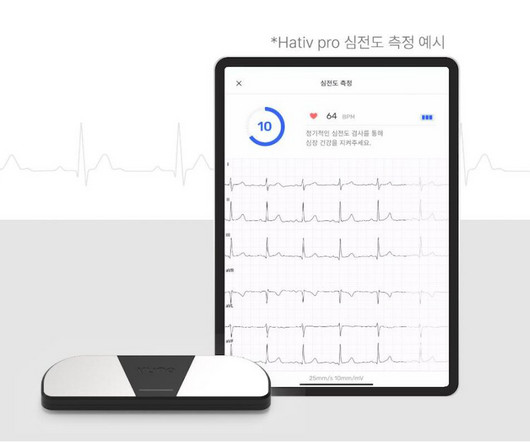
Mobi Health News - ECG
AUGUST 3, 2022
The clearance signals the company's move to offer medical AI devices to consumers.
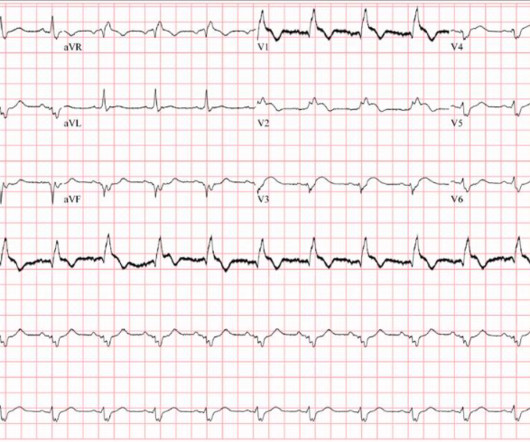
EMS 12-Lead
AUGUST 31, 2022
Acute LAD occlusion in the setting of Right Bundle Branch Block and Left Anterior Fascicular Block. Case Review: [link] Key features of Right Bundle Branch Block: In general, there is no ST elevation throughout the 12 Lead ECG. RBBB has expected slight ST depression, with T wave inversion, in V1-V3 when discordant to a positive R' wave. A possible normal variant is lateral ST elevation (i.e., I/aVL/V5/V6) with bulky T waves when subsequent to a large, slurred S wave.

Dr. Sanjay Gupta
AUGUST 31, 2022
The word arrhythmia comes from two Greek words. The first is ‘a-’ which means absence or loss and the second is ‘rhythmos’ which means rhythm. So arrhythmia literally means absence or loss of rhythm. A cardiac arrhythmia therefore means loss of cardiac rhythm. It is however used in medical practice as a description for disturbance rather than absence of heart rhythm.

ECG Cases
AUGUST 30, 2022
In this main episode podcast on ED risk stratification and workup of the febrile infant, recorded at the CAEP 2022 Conference in Quebec City with Dr. Brett Burstein and Dr. Gary Joubert, we answer such questions as: Which febrile infants require lumbar puncture? How accurate is procalcitonin in identifying low risk febrile infants? What is the difference between serious bacterial infection (SBI) and invasive bacterial infection (IBI) and why is this important in the work up of the febrile infant

Speaker: Simran Kaur, Co-founder & CEO at Tattva Health Inc.
AI is transforming clinical trials—accelerating drug discovery, optimizing patient recruitment, and improving data analysis. But its impact goes far beyond research. As AI-driven innovation reshapes the clinical trial process, it’s also influencing broader healthcare trends, from personalized medicine to patient outcomes. Join this new webinar featuring Simran Kaur for an insightful discussion on what all of this means for the future of healthcare!

Learning + Leading
AUGUST 29, 2022
Today’s medical assistant (CCMA) is challenged with an onslaught of information and more regularly challenged to solve increasingly complex issues than ever before.

Society of Thoracic Surgeons - Allied Health
AUGUST 24, 2022
Webinar Arrest after Cardiac Surgery: Is Your Team Ready? kchalko Wed, 08/24/2022 - 08:44 August 18, 2022 During this installment of the STS Webinar Series, an expert panel highlights a team-based approach to managing cardiac surgery patients who suffer sudden postoperative cardiac arrest. The panel also discusses the implementation of Cardiac Surgery Advanced Life Support protocols and their utility in failure-to-rescue algorithms.
Cardiovascular Update brings together the best content for cardiovascular medicine professionals from the widest variety of industry thought leaders.

EMS 12-Lead
AUGUST 30, 2022
New onset chest discomfort with demonstrable Hyperacute T waves that went undetected by EMS, EM, and cardiology. Case review presentation: [link] Learning Objectives Hyperacute T waves are disproportionately large in comparison to their paired QRS, and represent Grade I Sclarovsky-Birnbaum ischemia. Diffuse / global ST depression is consistent with subendocardial ischemia (supply-demand mismatch) when maximal in Leads II and V5.
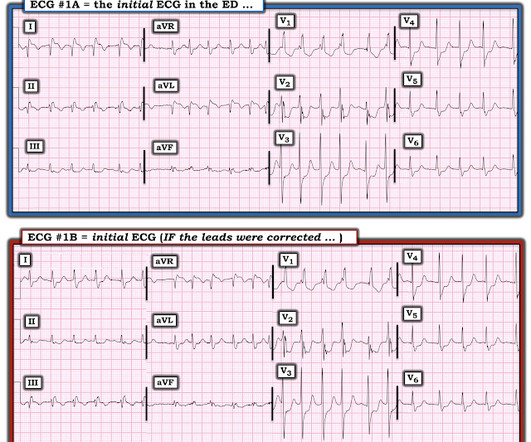
Dr. Smith's ECG Blog
AUGUST 17, 2022
I saw this EKG when reading through the system: What do you think? This is what I wrote: ATRIAL FIBRILLATION WITH RAPID VENTRICULAR RESPONSE RIGHT AXIS DEVIATION [QRS AXIS > 100] RIGHT BUNDLE BRANCH BLOCK MARKED ST DEPRESSION, CONSIDER SUBENDOCARDIAL INJURY "Severe ischemia (STE in I and aVL with reciprocal STD in inferior leads; precordial STD precordial maximal in V3): subendocardial ischemia vs. acute coronary occlusion.

ECG Cases
AUGUST 16, 2022
Which patients with ECG evidence of coronary occlusion require a CT scan to rule out aortic dissection? What are the range of ECG findings in acute aortic dissection and how do they change management? Dr. Jesse McLaren guides us through 9 cases to answer these and other questions on ECG interpretation in aortic dissection. The post ECG Cases 34 – ECG Interpretation in Aortic Dissection appeared first on Emergency Medicine Cases.

Vector Remote
AUGUST 8, 2022
What Clinics Can Do to Protect the Diagnosis and Treatment of Cardiac Arrhythmias Scope of Reimbursement Cuts The release of the annual Proposed Medicare Physician Fee Schedule is an event that business leaders and caregivers in healthcare anxiously anticipate. Operations and hiring plans are built and broken at the hands of the Schedule creators. Reimbursement directly translates The post A Paradigm Shift in Electrophysiology Reimbursement appeared first on Vector Remote Care.

Cardiomatics
AUGUST 4, 2022
Technology provides us with more and more possibilities in many areas of life, including medicine. One of the largest areas of development in the IT industry is artificial intelligence. What is its application in health care? It is no longer just a future dream, but a new reality for clinicians and patients who can already benefit from new technologies.
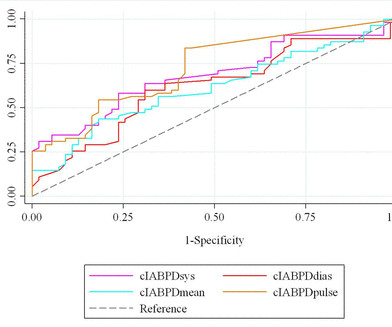
Open Heart
AUGUST 12, 2022
Background Patients with severe atherosclerosis have been found to exhibit considerable changes in blood pressure (BP) between arms. The objective of our study was to investigate the predictive value of interarm blood pressure difference (IABPD) for coronary artery disease (CAD) severity. Methods It was a cross-sectional study conducted in the Department of Cardiology, Chittagong Medical College Hospital, Chattogram from May 2020 to November 2020.
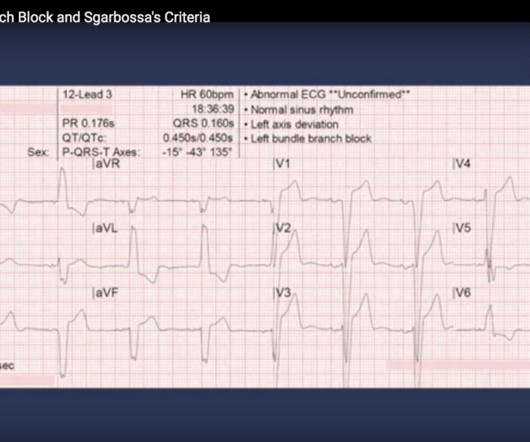
EMS 12-Lead
AUGUST 29, 2022
It's back to the basics! Take a seat and relax as the maestro, Tom Bouthillet, guides us through a stepwise approach to assessing Left Bundle Branch Block-- especially in the nefarious context of Occlusive Myocardial Infarction.
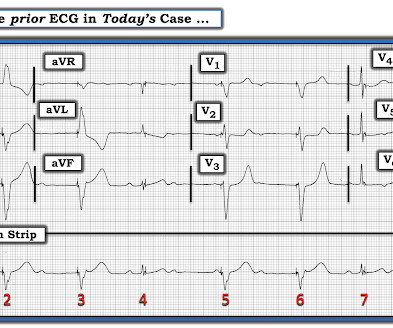
Dr. Smith's ECG Blog
AUGUST 3, 2022
The origin of these ECGs cannot be revealed. Time 0: Sinus rhythm with an intraventricular conduction delay (QRS is about 120 ms) Hyperacute T-waves in V2-V5, Diagnostic of Proximal LAD occlusion, but without ANY ST Elevation except for less than 1 mm in aVL, and 0.25 mm in lead I. There is also minimal STE in aVL with reciprocal STD in II, III, aVF.
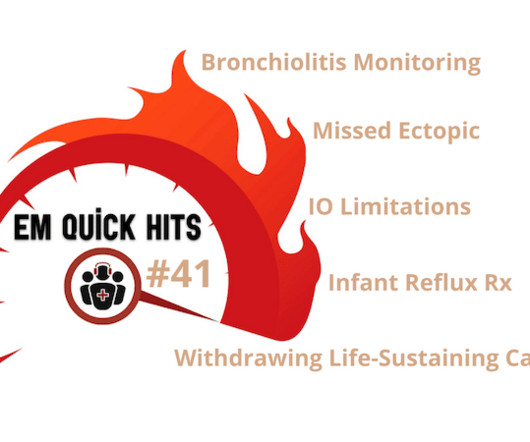
ECG Cases
AUGUST 16, 2022
In this EM Quick Hits podcast: Anand Swaminathan on limitations and practical tips on intraosseus access,Tahara Bhate QI corner on missed ectopic pregnancy, Sarah Reid from EM Cases Summit on oxygen saturation monitoring in bronchiolitis and management of infant gastro-esophageal reflux, Brit Long on the value of rectal exam in diagnosis of cauda equina syndrome, Hans Rosenberg & Ariel Hendin on withdrawal of life-sustaining care in the ED.

Dr. Sanjay Gupta
AUGUST 31, 2022
What is POTS? POTS stands for postural orthostatic tachycardia syndrome. In this condition, patients complain when they stand up for a prolonged period of time, they feel very uncomfortable with dizziness, palpitations and tremulousness and therefore they either have to sit or lie down or they risk collapsing. When you examine them, the heart rate can be found to be excessively fast.

Dr. Malcolm Kendrick
AUGUST 26, 2022
26th August 2022 And so, after a great deal of faffing about, my article on cardiovascular disease ‘Assessing cardiovascular disease: looking beyond cholesterol’ has been made free to view. Writing an article for a medical journal is not that difficult. Trying to submit it through Kafkaesque editorial systems, now, that is tricky. They seem incapable of understanding that I am not funded by anyone.

Open Heart
AUGUST 12, 2022
Objective We sought to investigate whether it is possible to obtain individualised left anterior oblique (LAO) by preprocedural electrocardiographic parameters and, if so, whether these parameters can help to improve the success rate of right ventricular (RV) lead implantation into the interventricular septum. Methods In this observational study, we assessed the relationship between preoperative electrocardiographic parameters and the angle of the interventricular septum obtained using thoracic

EMS 12-Lead
AUGUST 22, 2022
David Didlake Firefighter / Paramedic Acute Care Nurse Practitioner @DidlakeDW Expert commentary and peer review by Dr. Jesse McLaren @ECGcases [link] [link] This case was kindly submitted by Dr. Paco Dardon (@PacoDardon), and it’s a privilege to present it as a formal review due to the many pathophysiological, and electrophysiological, phenomenon at play.

Medical Xpress - ECG
AUGUST 23, 2022
A survey of 507 U.S. women found that most were amenable to using wearable electrocardiogram (ECG) technology throughout their pregnancy to monitor maternal and fetal health, according to a UW Medicine-led study published recently in the Archives of Gynecology and Obstetrics.
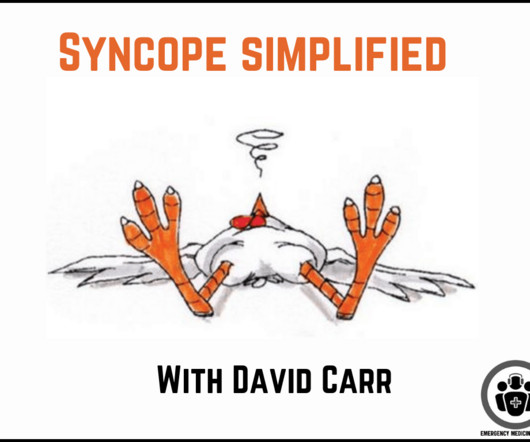
ECG Cases
AUGUST 2, 2022
In this main episode podcast, Dr. David Carr joins Anton to give us his simplified approach to syncope based solely on history, physical and ECG to help guide disposition decisions. We answer questions such as: What features have the best likelihood ratios to help distinguish syncope from seizure? What key clinical features on history and physical exam can help us distinguish orthostatic and reflex syncope from the more sinister cardiac syncope?

Dr. Sanjay Gupta
AUGUST 31, 2022
My name is Sanjay Gupta and in my last video, I decried the over-zealous prescription of medications which may have no or limited benefit for the patient. In this video, I wanted to explore this further with respect to Aspirin which is commonly prescribed for prevention or treatment of heart disease. This video is enigmatically entitled ‘Welcome to the primary Bank of Aspirin’.

Dr. Malcolm Kendrick
AUGUST 24, 2022
24th August 2022 As a change in direction, I thought I would share a short story I wrote. This was an entry to the New England Journal of Medicine competition. This one under the theme “A patient who presented too late”. It did not win, but I thought some of the readers of this blog may like it. THE REASON WHY The ewe was suffering, lying on its side, its bleat reduced to a painful gasp.
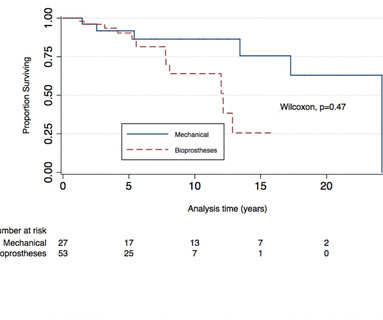
Open Heart
AUGUST 4, 2022
Background The evaluation of long-term inflammatory response and function in postoperative patients with aortic valve replacement (AVR) deserves special analysis because it is important to try to prevent reoperation and improve durability and functionality of the prostheses. It is our objective Methods In this study, we included a cohort of patients with aortic valve damage treated by AVR with mechanical prosthesis, bio prosthesis and we included a control group.
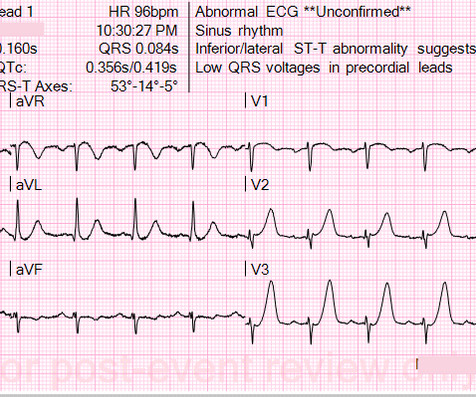
EMS 12-Lead
AUGUST 14, 2022
David Didlake Acute Care Nurse Practitioner Firefighter / Paramedic @DidlakeDW A 50 y/o Male was taking his dog for a leisurely stroll through the park when he suddenly experienced new onset chest discomfort. He waited for it to subside, but after 30 minutes of persistence he called 911. EMS personnel found him seated on a bench, uncomfortable, but without gross distress.

Journal of Cardiovascular Pharmacology
AUGUST 19, 2022
No abstract available

HCM Beat
AUGUST 16, 2022
An expert panel comprised of many of the world's top HCM experts recently published a retrospective analysis which looked at septal myectomy over the last 60 years of practice. It concludes that myectomy remains the best treatment for patients with obstructive hypertrophic cardiomyopathy.

Penn Heart and Vascular Blog
AUGUST 2, 2022
Cardiologists are doctors who have extra education and training in preventing, diagnosing and treating heart conditions. Learn why you might need to see with a doctor who specializes in heart conditions.

Dr. Malcolm Kendrick
AUGUST 6, 2022
6th August 2022 I find vaccines quite fascinating. To be more accurate, I find the thinking and emotion around vaccines endlessly fascinating… and often quite disturbing. They have become, what we in the UK call ‘national treasures.’ A national treasure is someone, such as Dame Judi Dench, or Sir David Attenborough. We laugh at their little jokes, we forgive them any possible weakness, we treat their statements as carrying a great and solemn weight.

Open Heart
AUGUST 12, 2022
Introduction Cardiac diseases are the leading causes of morbidity and mortality. Cardiac rehabilitation is proven to be beneficial in reducing morbidity, mortality and rehospitalisation rates. Recently, more emphasis is given to home-based telemonitored cardiac rehabilitation due to the recent pandemic of SARS-CoV-2. We plan to perform this systematic review and meta-analysis to compare the differences in functional capacity (FC) (measured in peak oxygen uptake (PVO 2 )) and health-related quali

The Beat Blog
AUGUST 12, 2022
The History The first recorded mention of the term “Accountable Care Organization” was by Dr. Elliott Fisher during a 2006 public meeting with the Medicare Payment Advisory Committee (MedPAC). Then, six years later in 2012, The Patient Protection and Affordable Care Act (ACA) authorized the use of Accountable Care Organizations (ACOs) to improve the safety and quality of care and reduce health care costs in Medicare.

Journal of Cardiovascular Pharmacology
AUGUST 18, 2022
Diabetic nephropathy (DN) is the most common complication of diabetes mellitus. Although G protein subunit beta 4 (GNB4)-derived circular RNA (circ-GNB4; hsa_circ_0068087) is a promising candidate biomarker in diabetes mellitus, whether circ-GNB4 participates in DN occurrence and development remains unknown. Herein, we focused on DN-associated human renal mesangial cells (HRMCs) injury, and HRMCs were exposed in high glucose (HG) condition.

Open Heart
AUGUST 12, 2022
Objective To estimate the incidence and HRs for bleeding for different dual antiplatelet therapies (DAPT) in a real-world population with acute coronary syndrome (ACS) undergoing percutaneous coronary intervention (PCI) in England. Design A retrospective, population-based cohort study emulating a target randomised controlled trial (tRCT). Data sources Linked Clinical Practice Research Datalink (CPRD) and Hospital Episode Statistics (HES).

Penn Heart and Vascular Blog
AUGUST 2, 2022
We sat down with Penn Medicines new cardiovascular surgeon, Dr. Marisa Cevasco, to learn a bit about herself and what motivated her to pursue a career in cardiac surgery.

Penn Heart and Vascular Blog
AUGUST 1, 2022
You might be familiar with statins; more than one in four Americans over 40 take these cholesterol-lowering drugs. Learn how statins work and how they may help lower your cholesterol.

Open Heart
AUGUST 19, 2022
Objective Area-level socioeconomic factors are known to associate with chances to survive out-of-hospital cardiac arrest (OHCA survival). However, the relationship between individual-level socioeconomic factors and OHCA survival in men and women is less established. This study investigated the association between individual-level income and OHCA survival in men and women, as well as its contribution to outcome variability and mediation by resuscitation characteristics.
Let's personalize your content